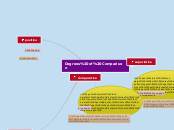door naira vanesa 5 jaren geleden
175
Tips for Developing Academic Reading Skills
Improving academic reading skills involves mastering various techniques and understanding specific types of words that signal different relationships between ideas. Words that show comparison, addition, contrast, cause and effect, and those that clarify or illustrate concepts are pivotal in grasping the connections within the text.









